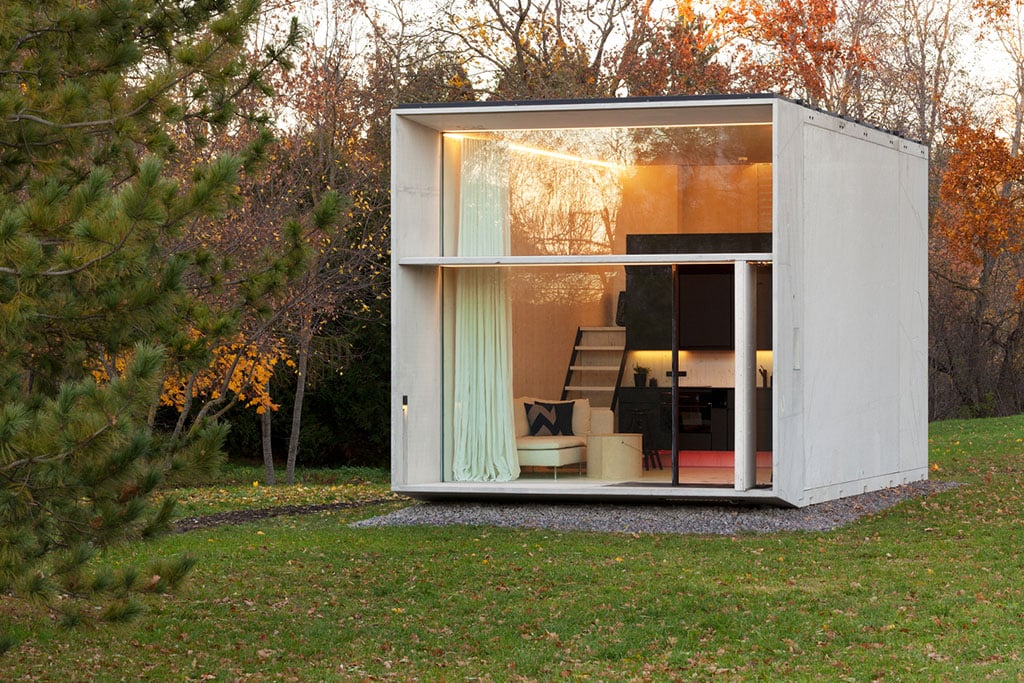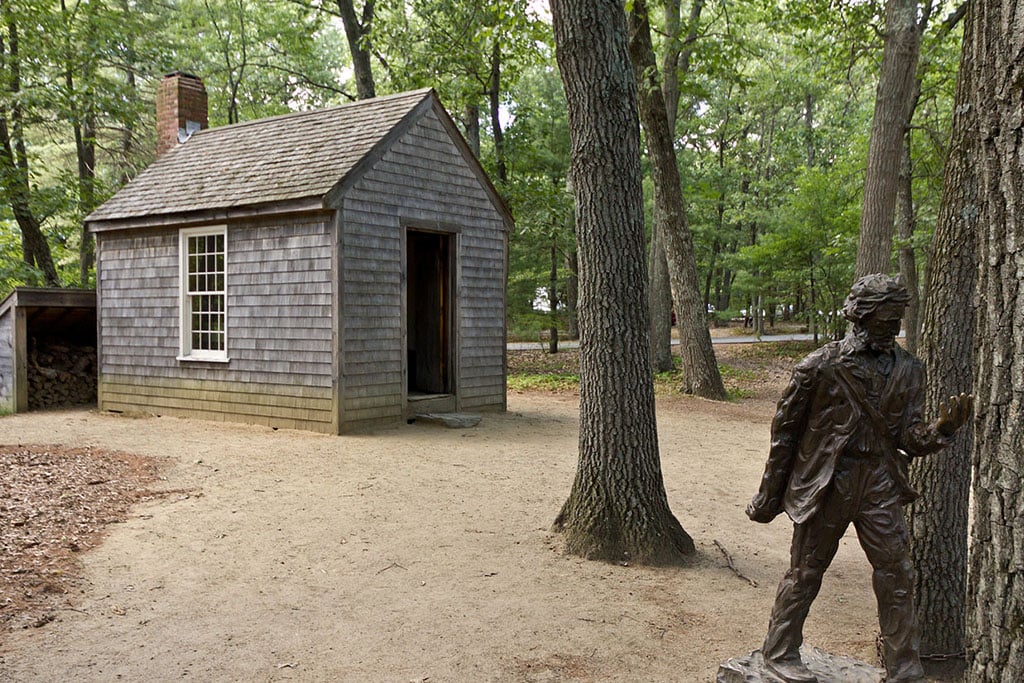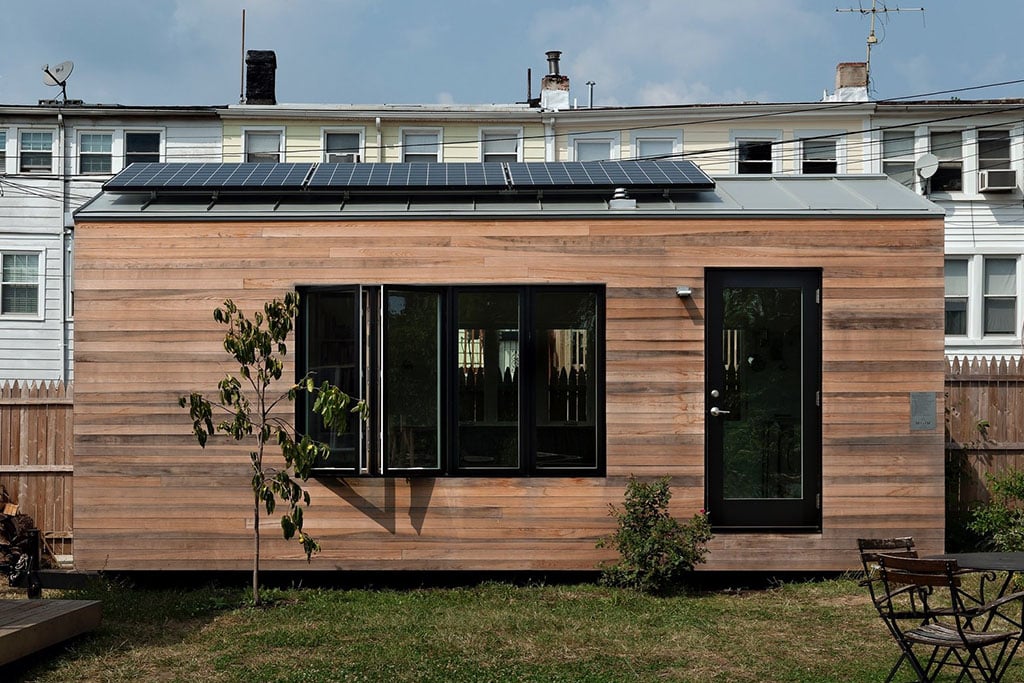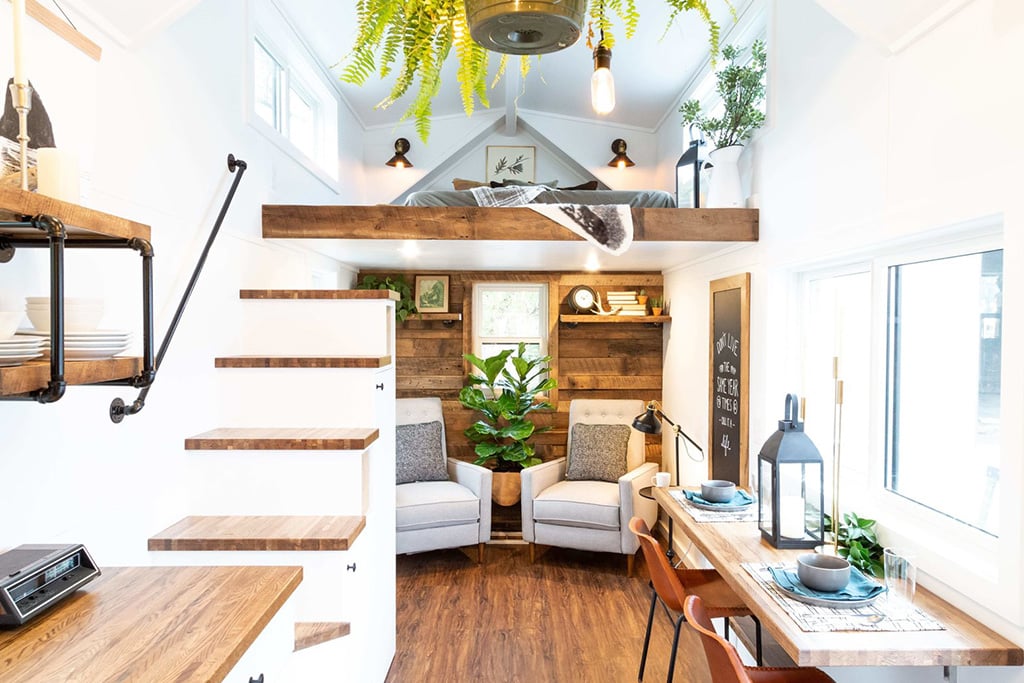Tiny homes are living spaces that are no bigger than 400 square feet, where some can even go as small as only 60 square feet. They can either be stationary or mobile, making them a desirable option for those who seek to live a more nomadic lifestyle. People who choose to have them mobile build their homes narrow, not any wider than 8 ½ feet because of the maximum width a vehicle can legally drive on roads. Typically, these homes have their lounge, kitchen, and bedroom all within the same room.
It is no doubt that these homes leave minimal damage to the environment as less space occupied means fewer resources & energy used, and carbon footprint is kept at a low. A study has shown that people who downsized into a tiny home reduced their energy consumption by 45 per cent. They also developed an eco-friendly & minimalist lifestyle to suit their way of living in restricted spaces.
 ArchDaily | © Paul Kiumet
ArchDaily | © Paul Kiumet
The History of Tiny Homes and its Rising Trends Over the Years
In 2012, a man residing in small state Iowa named Jay Shafer had the vision of bringing tiny homes into the mainstream and founded his own company called the Tumbleweed Tiny House Company. He popularized tiny houses after publicizing his first design that was only 96 square feet. With his team that he had founded in the early 2000s called “Small House Society”, they started publishing guides and sold thousands of plans for tiny home living.
The trend continued to grow outside of America in the latter years, with more homes spreading across social media platforms like YouTube for their highly innovative creations and designs. Tours for “history’s tiny homes” like Henry David Thoreau’s cottage and Marie Antoinette’s 255 square foot home are also opened to the public every year.
 en.wikipedia | © RhythmicQuietude
en.wikipedia | © RhythmicQuietude
Environmental Benefits
The world is becoming more aware of the need to maintain an ecological balance, and incorporating sustainability as a necessity in lifestyles has turned into the norm. Tiny homes have the upper hand in terms of providing a residential property that supports this lifestyle.
- Building materials are kept to the minimum
A smaller home means fewer materials are required to build the house, reducing manufacturing and construction time. It also means rides are less frequently needed to transport these materials, and in the big picture, reduce the carbon emission from factories and vehicles.
- Viability of the use of environmentally friendly supplies
With traditional and large houses, it is not always feasible to use recycled materials. There is simply not enough supply for such a big project, plus recycled materials come at a price. Therefore, since tiny homes do not require a ton of supplies, materials like recycled timber are much more accessible. Power through solar panels is also more feasible.

- Lower “life cycle” cost
Just like any other building, a tiny home will deteriorate as the years pass by. However, the cost of maintaining the life cycle of a small home will significantly differ from a typical traditional house. With fewer appliances to keep, it helps the owner save on the cost to repair and replace them.
- Reduced energy use
A tiny house’s most significant environmental impact is due to its reduced energy use. Many people do not realize the extent of their impact on the environment. Turning on the appliances alone is already a contribution to pollution and energy waste. Unfortunately, it is hard to stay off the grid as these appliances like heaters, air conditioning systems, lighting, and water heaters, are a necessity in most people’s way of living.
However, tiny houses keep these liabilities at a low because of the smaller space and area that the appliances have to cover. Compared to larger homes, even though the time spent with these appliances are the same, they cover less ground. They also have their optimization settings minimal, which reduces the overall power usage.
- Fewer appliances and minimal device optimization
Adding on to the previous point, lesser spaces mean only a handful of appliances are required throughout the house. For example, some tiny homes share the same space between the lounge, dining area and bed space. Compared to a traditional home where three sources of lighting are found for three separate rooms, only one source is required for recessed lighting in a tiny house.
 Liberation Tiny Homes | © Matt Meshey
Liberation Tiny Homes | © Matt Meshey
- Working in public spaces
Living tiny necessitates the use of the outdoors as a “second living space”. In Singapore’s context, it is the same way a person living in a tiny 2 or 3-room HDB flat will spend much of their time in cafes, malls, and open workspaces. Because of this, tiny houses consume less energy from heating, cooling, or lighting the indoors.
- Fewer possessions, less waste
Without room to store excess inventory, people are warier of what they buy. They begin to value space more than trinkets and toys and only hold onto their most useful and valuable possessions. As one’s consumption drops, so does one impact on the environment. Not only does this include packaging but extraction, fabrication, and transportation as well.
Final Thoughts
Shifting into tiny homes may not be for everyone as it comes with its own set of challenges, but as the famous saying goes, “you reap what you sow”. Dwelling in an environmentally friendly home not only brings about sustainability on the building itself but also finds its way to integrate with the residents’ lifestyle. From the start process of filtering out non-essential home properties to maintaining a minimalistic lifestyle to sustain the wellness of the house, people start to live with an underlying rationale of being sustainable.










